How to cut screws because this can be inconvenient if you have to buy smaller screws when you have already done half of a project. But it also can make trouble for you if you have too long screws to drive in!
The other situation could be if you accidentally drill a long screw into your project surface then you have to cut the ends as well.
So, in a situation like this, the better option is to cut the extra ends of the screws that pointing out.
But before we straightly jump to how to cut screws, you should know the major types of screws.
Types of Screws
Wood Screws

Wood screws are specifically designed to drill into the wood. Because of its threaded shanks with fine threads, you need a pilot hole to drill it into the wood.
However, if the wood is soft then there’s no need for pilot holes to drive them into.
Wood screws are comparatively easy to cut down if they are drilled into a pilot hole.
The main reason and advantage to drive a wood screw into a pilot hole are to prevent the screw from losing its point or stability.
Machine Screws
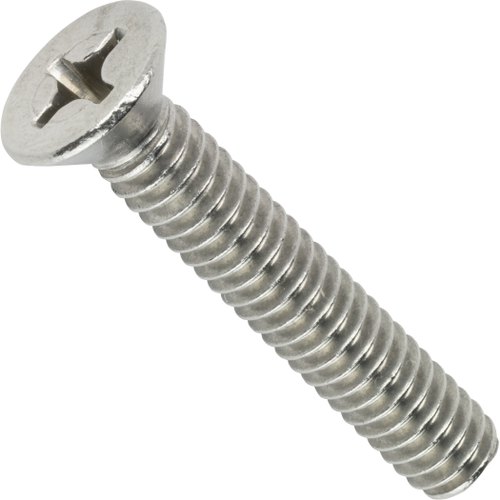
With fine threads and straight shanks, the machine screws are specifically designed to fit with nuts and threaded holes.
Moreover, the machine screws are used in machining applications that’s why we call them “machine” screws. Especially, they are ideal for gripping heavy metal objects.
As Wikipedia said, the machine screws in diameters ranging up to 0.75 in (19.05 mm).
Machine screws have further two types:
Large Machine Screws
Small Machine Screws
The stove bolt is also considered a type of machine screw.
Sheet Metal Screws

According to their name, sheet metal screws are specifically designed to be driven into hard sheet metal. Usually, these screws are used to fasten two or more pieces of sheet metal.
Sheet metal screws are available in three head shapes, flat head, round head, and hex head.
But the question is how they cut through metal.
So, they have a threaded shank with sharp threads that allow them to easily cut through metal sheets and other hard materials like hardwood, etc.
Deck Screws

These screws are also known as self-tapping deck screws because they can be driven as nails. Deck screws are ideal for decking. They are self-sinking, coated, sharp, and fully corrosion-resistant.
Drywall Screws
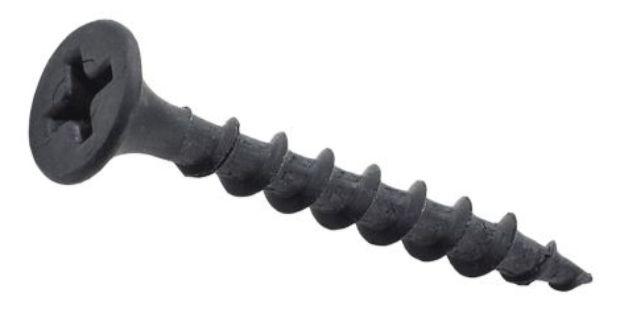
Drywall screws are specifically used for fastening wood, timber, metal, or plasterboards. Usually, they are light and deeper so they can easily stay in place against the drywall.
These screws are also popular for repairing nail pops.
Drywall screws are different from wood screws because they are hardened. While the wood screws are made of soft metal so they are thicker.
How to Cut Screws
There are different methods to the screws using different tools. So, we’ll discuss all of these ones by one.
Steps
- Measure the screw size
- Don’t drill the screw directly into the surface
- Drill a pilot hole to thread the screw
- Use a screwdriver to thread the screw into soft wood and for hardwood and other metals use a drill
- Bolt the screw accurately into the pilot hole
- Determine whether the screw is pocking out or not
- Cut the ends of the screw that pocking out
Methods
1. Cut the Screw with a Wire Stripper
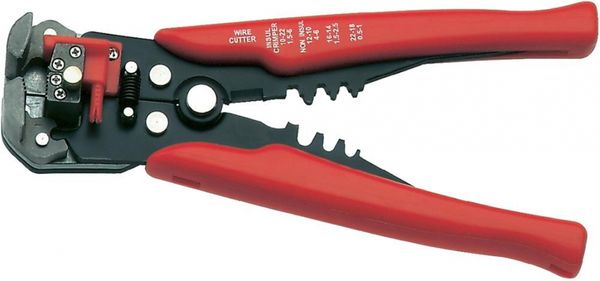
A wire stripper is an effective tool to cut the screws. It also can be used to measure and adjust the screw. Keep in mind, that you need a high-quality wire stripper instead of using a low-quality wire stripper because they are not stronger to finish the job.
The wire stripper has two sides, one side has measurements and another side is blank. So, you have to cut the screw with the measurements printed side.
As we know, a wire stripper has multiple hole sizes. So, you have to choose the accurate hole that fits the screw.
Once you fit the screw into the hole the next step is to cut the screw by pressing the wire stripper against the surface where the screw is drilled.
Squeezing the wire stripper can make your job easier but avoid jiggling the tool.
2. Cut the Screw with a Bolt Cutter

Bolt cutters are used for heavy-duty cutting with a long handle and lever mechanism. With less user effort bolt cutters are specifically designed to cut through screws.
Moreover, a bolt cutter is a manual tool so it can be used without electricity.
The only problem with bolt cutters is that are heavy so they are difficult to use in tight spaces. Its sharp blades can cut the screws neatly but it needs more hand power.
Furthermore, the longer handles give you the ability to apply more hand power.
3. Cut the Screw with a Hand Saw

Hand saws with sharp teeth are specifically designed to cut through metal. A hacksaw is also known as a hand saw to cut through nails and screws efficiently. A hacksaw is an ideal approach to reaching into narrow gaps.
4. Cut the Screw with a Piler
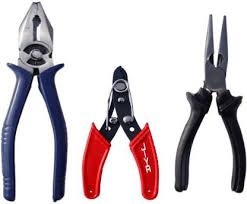
Cutting a screw with a piler is the easiest and simplest method. You only need to determine the area where you want to cut and press the mouth of the piler with hand power.
However, if the screws are harder then you may need stronger piler. Moreover, it wouldn’t be enough to cut the screw by just pressing the piler mouth with hand force but you also need to squeeze.
5. Cut the Screw with an Angle Grinder
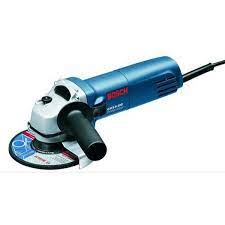
For more thick and hard screws and bolts you may need a heavy-duty tool to cut. So, an angle grinder could be a better option in this type of situation because it is capable of cutting and shortening the screws, bolts, etc.
Moreover, it comes in various sizes so it can be used for any type of metal cutting as well.
6. Cut the Screw with a Reciprocating Saw
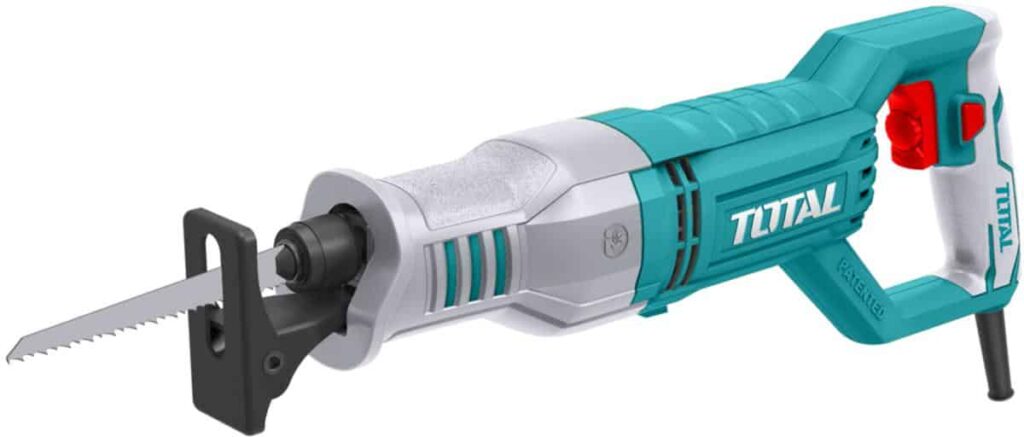
A reciprocating saw looks the same as a handsaw but it is automatic while a handsaw is a manual tool that needs hand power to cut. Its powerful motor makes it faster and effortless. It can be used to cut plastic and wood as well.
Because of its large size, it won’t be more durable in small cuttings and fixings.
However, it is more effective to cut the screws in tight spaces. Most importantly you have to put a metal cutting blade before cutting a screw with a reciprocating saw.
7. Cut the Screw with a Jigsaw
Utilizing a jigsaw can be another effective method for cutting screws, particularly if you’re dealing with larger or thicker materials.
Secure and Mark the Screw: Begin by securing the screw in a vise or clamp, ensuring it’s held tightly. Use a marker to pinpoint where you intend to make the cut.
Setup the Jigsaw: Attach a metal-cutting blade to your jigsaw. Make sure the device is unplugged or turned off while you’re doing this to maintain safety.
Cut the Screw: Plug in or turn on the jigsaw and align the blade with the marked area. Apply steady pressure and start cutting. Remember, a jigsaw is more powerful than a hacksaw, so the cut will be made relatively quickly.
Smoothen the End: After cutting, the screw’s end might be sharp or uneven. Use a metal file to smoothen it out, ensuring a clean and safe finish.
8. Using a Dremel Tool
If you have a Dremel tool at your disposal, it can be a quicker and more accurate option for cutting screws.
Secure and Mark the Screw: As with the hacksaw method, secure the screw and mark the cutting point.
Cut with the Dremel: Attach a cut-off wheel to your Dremel tool. Position the wheel on the marked point and apply a steady pressure. The Dremel will cut through the screw faster than a hacksaw.
Smoothen the End: Use a file or the Dremel itself to smooth out the cut end.
Final Thoughts
All tools we’ve mentioned above are best to cut long or damaged screws in different situations. Every method gives you a proper way to cut the screws.
Moreover, power and automated tools make your job easier and effortless as compared to manual tools like a handsaw or hacksaw. Once you know how you can cut easily with both types of tools.
We hope you have learned how to cut screws after reading our guide, isn’t it?
FAQ
Which tool is best to cut a screw?
The power and automated tools are always better for accurate and neat screw cutting as compared to the manual tools. So, if you want to take your desired results you should go with a power tool. And in automatic cutting tools, a reciprocating tool would be the best pick.
Does a Handsaw/Hacksaw cut the metal?
A hacksaw or handsaw is usually used to cut thin metal like steel, copper, aluminum, etc. However, cutting hard metals, won’t be a great choice.
Can you cut screws with a drill?
A drilling machine can be used to cut bolts with the combination of a hacksaw. But cutting a screw with a drilling machine won’t be a wise idea.


3 thoughts on “8 Effective Methods to Cut The Screws: (Guide)”